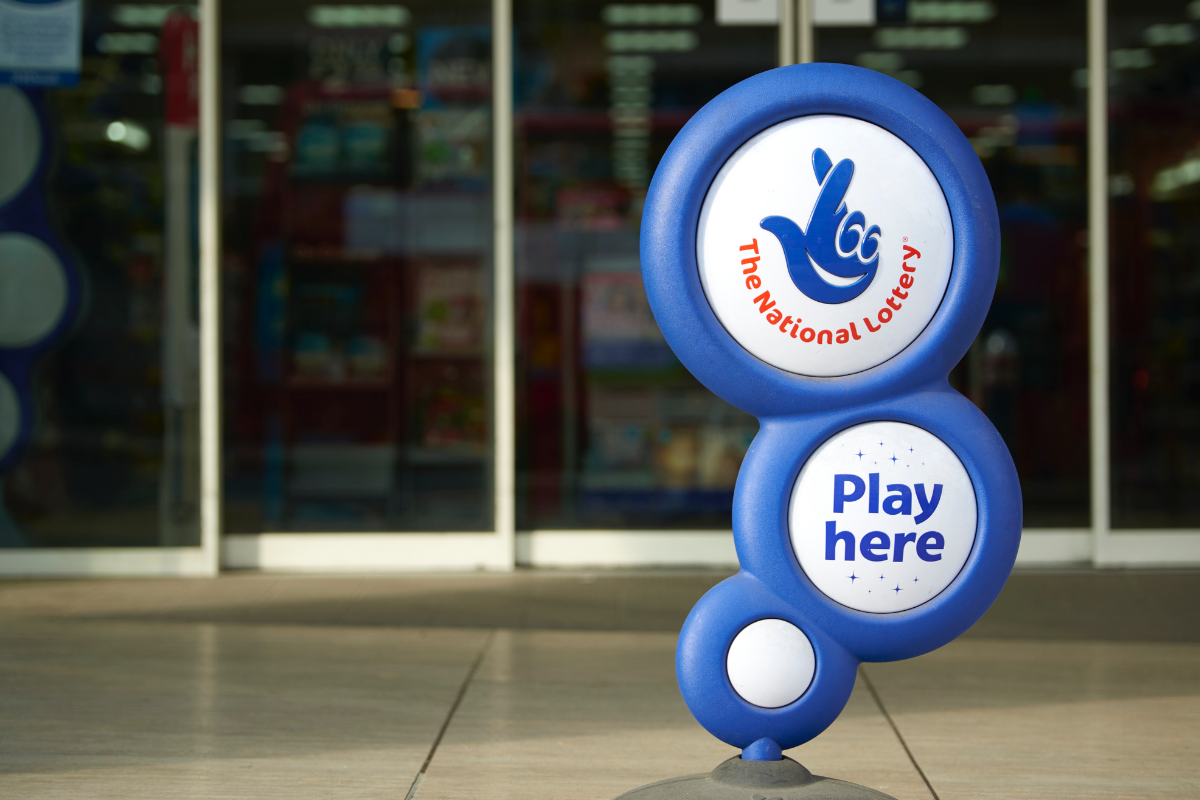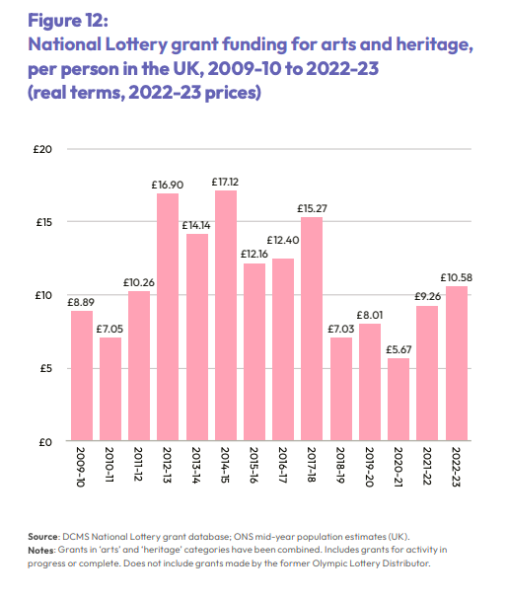
Photo: icenando via iStock
How does the National Lottery fund the arts?
Following news that National Lottery funding for the arts has declined, Arts Professional looks at how the money is raised and allocated.
Arts Professional recently reported National Lottery funding for the arts had fallen 3.1% year-on-year, while declining for the third consecutive year.
The National Lottery supports the arts through its National Lottery Distribution Fund, also known as good causes funding. The fund has been running since the inception of the National Lottery in 1994 and, according to the lottery’s website, has raised over £49 billion for good causes since then.
The money raised comes primarily from a proportion of the sales of National Lottery games but is supplemented by items such as unclaimed prizes.
READ MORE:
- Arts projects to benefit from lottery fund expansion
- New lottery operator unable to meet pledged targets
The funds apportioned annually to the arts, heritage, sports and community, the latter of which covers charitable activities, as well as health, education and the environment.
The current distribution, last amended in 2010, sees the arts receive 20%, national heritage receive 20% and sport receive 20%, with the other 40% shared under the community umbrella.
Funding for the arts is then split between the UK’s four arts councils and the British Film Institute (BFI), while national heritage funding goes to the National Lottery Heritage Fund (NLHF) and community funding to the National Lottery Community Fund (NLCF).
According to Department for Culture, Media and Sport’s recent report on National Lottery funding, Arts Council England (ACE) received 13.9% of the total good causes funding in 2023-24, while Creative Scotland received 1.8%, Arts Council of Wales (ACW) 1%, Arts Council of Northern Ireland (ACNI) 0.6% and the BFI 2.7%.
All the bodies that receive funding then award grants for projects and have autonomy to determine how they deliver the money.
Some have designated funding channels, such as ACE’s National Lottery Project Grants, NLHF’s National Lottery Grants for Heritage, or the BFI’s National Lottery Audience Project Fund.
Others allocate the funding across several project streams, such as Creative Scotland, which splits it across six funds administered by Screen Scotland and two open funds aimed at individuals and sustaining creative development. In Northern Ireland, ACNI designates the funding across its annual funding programme, small grants programme and a designated lottery project funding channel.
Meanwhile, the NLCF offers funding awards across each of the four UK nations through focused programmes and also operates a nationwide National Lottery Grants for Heritage programme.
The National Lottery’s website says over 690,000 projects have been supported nationwide using good causes funding to date.
Fluctuating funding
The fact that good causes funding is largely driven by ticket sales helps to explain why National Lottery funding for the arts fluctuates, despite allocation staying consistent.
In its latest report, DCMS says National Lottery sales were lower in 2023-24 than 2022-23, primarily due to the performance of instant products such as scratchcards. The report attributes the decline to ongoing economic and cost-of-living pressures, with average player spend also lower than previous years.
A report by Campaign for the Arts and the University of Warwick, published in July, detailed national lottery grant funding for arts and heritage projects since 2010.
It showed how funding has fluctuated over the last 14 years, standing at £10.58 per person in 2022-23. This is 19% higher than in 2009-10, but 38% lower than the peak year (2014-15) and 4% lower than the average across the study period (£11.05 when adjusted for inflation).
 Source: The State of the Arts
Source: The State of the Arts
The current operator of the National Lottery is Czech company Allwyn, which took over from Camelot at the start of February this year.
Allwyn previously committed to raising £38bn for good causes over the next decade by donating a greater proportion of sales from games, but since taking over the licence has said it will be unable to meet its pledged targets.
Join the Discussion
You must be logged in to post a comment.